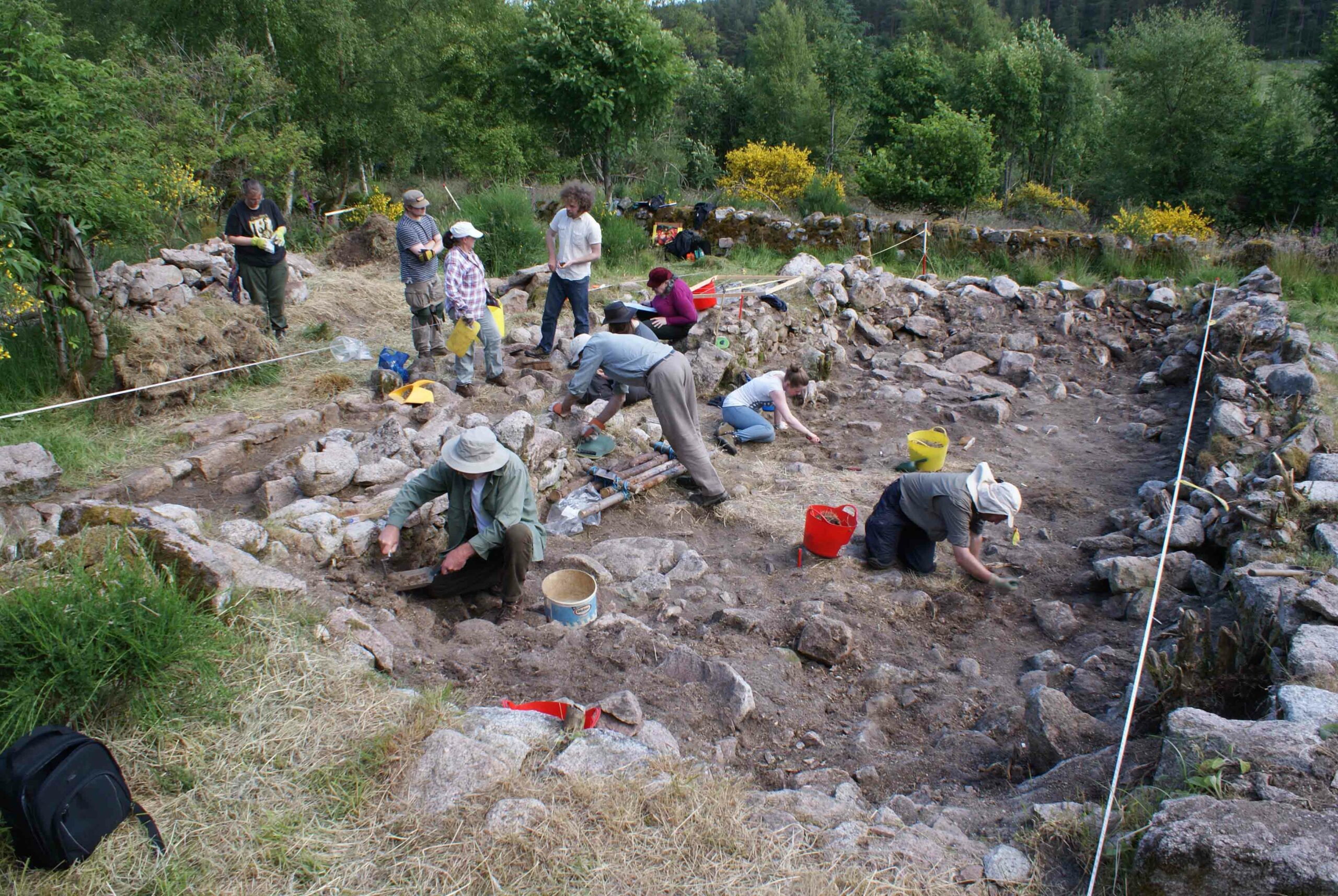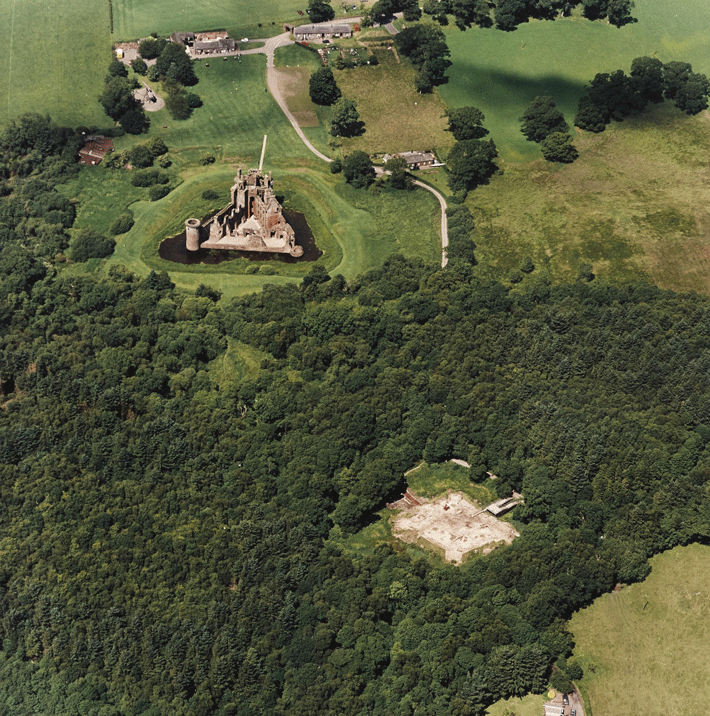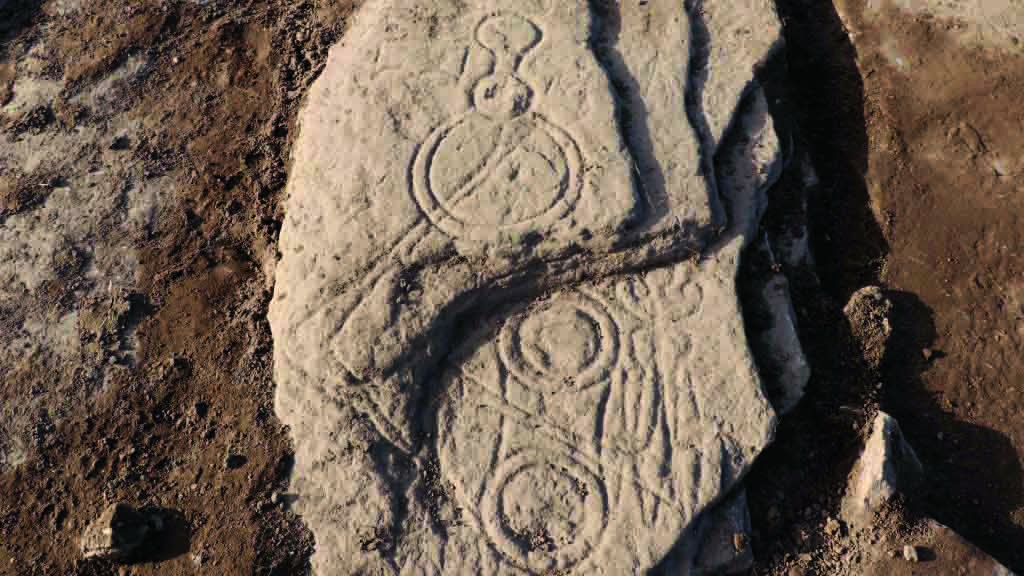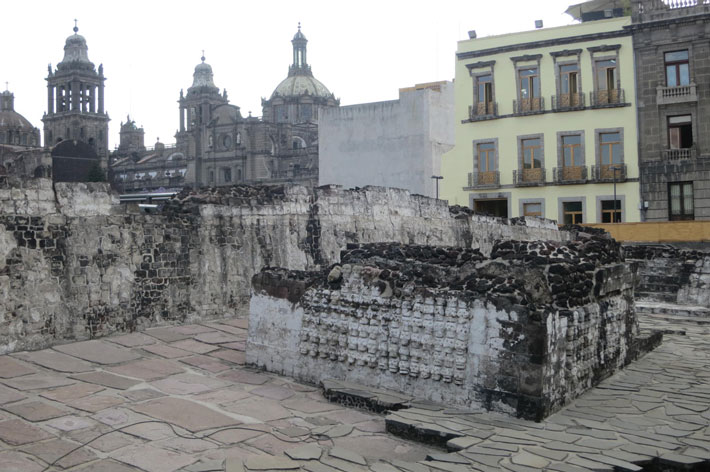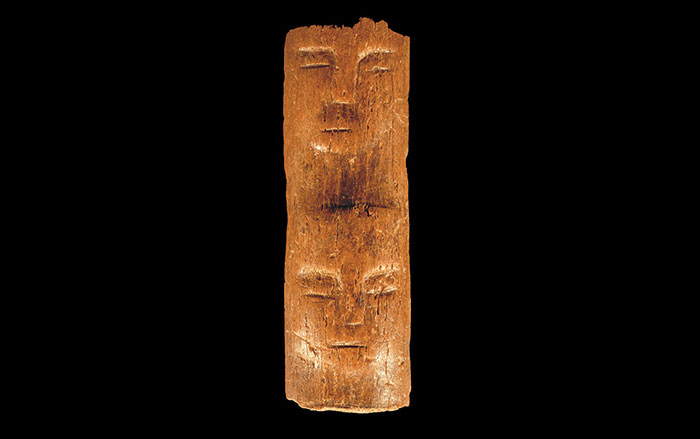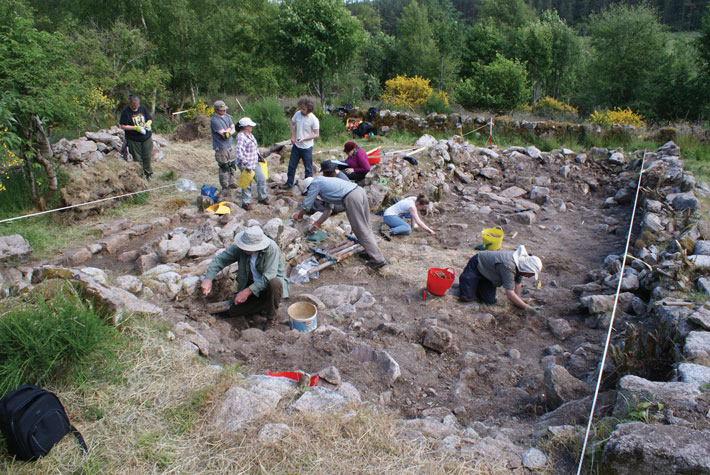
It had to have been one of the most defeating days of Alexander Littlejohn’s life. After 40 years of living in a home he’d built by hand, the 85-year-old was unceremoniously carried out, still lying on his bed, as his family looked on. Local folklore tells of how he was made to watch as bailiffs removed all his furniture, smashed his walls, and burned his roof.
It was Scotland, 1878. There was little compassion for landless peasants. The Littlejohns lived on the slopes of Bennachie, a prominent rounded hill in northeastern Scotland. Years before, Littlejohn had been lured to the hill—a patch of common land, where local people had traditional rights to use its resources to support themselves—because it offered a small opportunity to build a life of his own. But eventually local landowners decided to revoke the land’s common status and claim ownership. When the elderly Littlejohn became unable to pay the rent, he was evicted in front of his wailing grandchildren.
Standing on the slopes of Bennachie today, next to the knee-high ruins of Littlejohn’s croft, it appears idyllic. Sunshine bathes the south-facing slopes, which offer splendid views of rolling hills and open skies. A freshwater spring gurgles behind the remains of the house, and a hillfort, built in the late Iron Age by the Celtic people known as the Picts, stands sentinel above. But it is a misleading picture. “Living up here would have been really harsh, particularly during the cold, snowy winters,” says Jeff Oliver, archaeologist at the University of Aberdeen. “The land is marginal and windswept and would have been covered in scrub and small trees at that time. Water runoff down the hillside was a huge issue. It was hardly an ideal place to set up a smallholding.” Despite these challenges, at its peak in the 1850s, the hillside supported a colony of some 70 settlers—10 families—who came from all over Scotland to try to make an independent living.
Since the early eighteenth century Scotland had been undergoing what was known as “improvement.” Before then, landless peasants were able to support themselves by farming small plots of land as tenants of wealthy landowners. But those landowners were determined to bring Scotland into the modern age by transitioning from arable and mixed farming, which supported a large tenant population, to sheep farming, which was proving more profitable. History records brutal evictions and forced emigration of the surplus farmers as aristocratic landowners instituted an agricultural and social revolution.
Many people who were cleared off their land emigrated to North America, Australia, and New Zealand. Among those who could not emigrate or chose to stay, some toiled on the new sheep farms. Others were tasked with farming marginal land in new “crofting townships.” And a large proportion became migrants, perpetually traveling around the country in search of work. They constructed temporary dwellings from turf and heather thatch and moved on when work dried up. Some of these migrants ended up at Bennachie, where they found a stability few others did. “It is one of the few sites that we are aware of where this pool of landless people could form a settled community. People arrived here from all over the north and east of Scotland,” explains Oliver. Unlike other landless folk, the Bennachie people settled down long enough to have left a mark. And a rare mark it is. Historically, there are no other colonies known in Scotland quite like this one. Seldom do such marginalized people leave much in the archaeological record. To some extent, the story of Bennachie is the story of marginalized people everywhere—an important story rarely preserved or told.

The daily struggles of the Bennachie community were recorded in census records, diaries, and farm accounts, but these sources came from outside the community. “For the most part, the people who lived here provided very little in the way of written evidence about their own lives. By digging their homesteads we are beginning to give these people a voice and paint a more nuanced picture of rural life in Scotland at this time,” says Oliver, who is leading the Bennachie excavations.
Beginning in 2011, Oliver and his team, which includes a local conservation society called the Bailies of Bennachie, carried out systematic test pitting across the site. During summer 2013 they carried out their first full-scale dig, opening trenches at two of the homes. One of these was “Shepherd’s Lodge”—the former residence of Alexander Littlejohn and his wife, Elisabeth. Littlejohn, a local, was one of the founders of the colony, but this did not protect him from the prejudices of nearby villagers, who viewed the entire colony with suspicion, as backward and uncivilized. A diary of a local man known only as “Johnny” describes a visit he made in 1841 to the house of one of the colonists, Willie Jamieson: “The interior of this humble and solitary habitation had a very gloomy appearance. Its furniture were remarkably scant and of the meanest description. The only window it had was on the skylight principle, a hole through the apex of the roof serving the combined purpose of window and lum [chimney]. Meeting with rather indifferent reception from these mountaineers we understood we were no altogether welcome guest.”
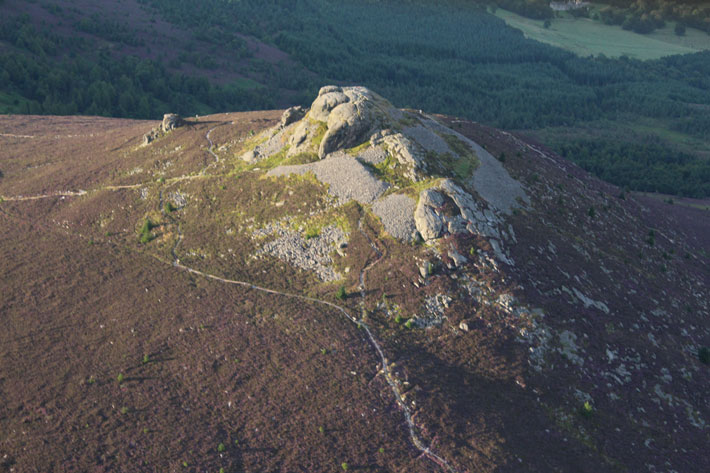
Historian James Allan wrote an essay in 1927 that describes life on Bennachie as technologically behind the times. In the “Deeside Field,” he writes that their houses were similar to his father’s, stone clay with a thatched roof of broom and heather. He continues to say that the land was not drained with tiles, a more contemporary practice, but that this was done with ridges and furrows, which decreased the land’s productivity. Furthermore, he concludes that modern reaping machines were impossible to use on such an uneven surface. “Historical sources about the colony paint a picture of a society living on the edge: at best as ‘squatters’ of ‘limited intelligence’ scratching an existence from poor-quality agricultural soils. At worst, as licentious and morally reprehensible,” says Oliver. Indeed, Littlejohn’s third child, Elisabeth Littlejohn, is mentioned scornfully in the parish records on numerous occasions for her extramarital relationships and illegitimate children. A typical record from the Chapel of Garioch Kirk-Session Records from September 25, 1846, reads, “compeared Robert Minty, from Daviot and Elisabeth Littlejohn from Benochie...by which it appeared they were guilty of the sin of fornication and their decisions of absolution. The Session after deliberation on this case resolved to rebuke them and dismiss them from censure which was accordingly done.” Such behavior probably wasn’t unusual, but it might have been more remarked upon in parish records because of prejudices about the colony people. The mortal sins of the colonists have long since been washed from the soil, but a little digging has provided a wealth of information on other aspects of their lives, including the quality of their homes and farmsteads.
Today all that remains of Shepherd’s Lodge are tumbledown stone walls. It appears to have been a long, thin building, consisting of a single-room dwelling (approximately 30 by 15 feet, possibly partitioned by curtains) and three adjoining enclosures (roughly 15 by 15 feet each), most likely animal sheds and a cart house. The fallen stone suggests that the house had gable ends and half-height stone walls, probably topped with turf and roofed with thatch. “The house, barns, and wall systems are well built and must have taken a huge number of person hours to construct,” says Aoilfie Gould, University of Aberdeen archaeologist and site director at Shepherd’s Lodge. A cart track runs in front of the house and a patchwork of small fields covers the slope below. A kitchen garden, known locally as a “kaleyard,” wraps around the back, resplendent today with wild-cherry trees, most likely descendants of ones planted by the Littlejohns.

To the side of the house lies one of the best preserved, and most important, elements of Shepherd’s Lodge—the well. A carefully constructed stone alcove, three feet high and two feet across, is set into the hillside, with an arched roof to protect the well’s water from debris, as well as flagstones in front to prevent the ground from becoming a muddy mess. “It is much more than just a hole in the ground, and demonstrates good knowledge of hygiene and improvement-era ideas—something that these so called ‘mountain people’ were not supposed to know about,” says Gould.
Artifacts have been thin on the ground, but the few that have been found speak of a family that appreciated craftsmanship, despite economic hardship. “We might expect them to have the ‘cheapest’ of everything, but that isn’t the case,” says Gould. The archaeologists found fragments of willow-pattern pottery, transfer-printed ware, and, perhaps most surprising of all, gilt-edged china. “Although they may not have been able to afford full sets, they still had one or two pieces of fancy tableware,” says Gould. Personal finds include a glazed clay marble, which was probably a toy of one of the Littlejohn children, and a broken clay pipestem with tooth marks in the end. “We can probably narrow it down to just one or two Littlejohns who might have smoked that pipe,” says Gould. Downhill from the house, a network of sturdy dry stone walls and deep ditches demarcate the fields and signify communal work. “The sheer level of work involved in making these agricultural improvements couldn’t have been carried out by the Shepherd’s Lodge residents alone—it must have been a community effort,” explains Gould. And details of the walls, such as buttress structures, carefully positioned so that hurdles could be attached to create sheep pens, reveal that the colonists were able farmers.

Soil samples gathered from a nearby farmstead in 2012 confirm that they embraced then-modern ideas to maximize the productivity of the land. In an untended state, the slopes of Bennachie are not well suited for farming: A thin layer of topsoil above compact glacial till prevents good drainage. But on tended parts of the slope, the soil reveals the measures the colonists took to improve their fields. “We can see that they removed stones, constructed drainage ditches and subterranean field drains, plowed in glacial till to improve soil depth and drainage, and fertilized by adding domestic waste,” says Karen Milek, geoarchaeologist at the University of Aberdeen. “They must have invested a great deal of time and labor to build up their kaleyards and fields in this way.”
Despite the fundamental poverty of the land, the Bennachie colonists appear to have, for a time, maintained a reasonable living. However, things went dramatically downhill during the latter half of the nineteenth century. One of the triggers for the downturn was a controversial appropriation of the common land by wealthy local landowners in 1859, who wanted to rid themselves of the troublesome settlers, ensure their own claims to the land, and start making money by planting trees for lumber. “Suddenly all the colonists became tenants and either had to pay rent or be forced off,” explains Oliver. Often landlords wasted no time making the land profitable. “As soon as people were evicted, [the landowners] started to plant trees.” But occasionally a newly empty croft was rented again, as in the case of Hillside, home of either the Christies or Coopers, and one of the best plots on the hill.

In 1860, new paying tenants moved into Hillside—John McDonald and his daughter Margaret, originally from Sutherland in the far north. “They were some of the last settlers to arrive at the colony, and most likely they would have heard about the colony by word of mouth,” says Oliver. Excavations at Hillside in 2013 revealed that the McDonalds may have been a cut above the other colonists. Inside the house, which measures 35 by 15 feet, Oliver and his colleagues uncovered a cobbled floor and a well-preserved hearth surrounded by flagstones. By contrast, Shepherd’s Lodge had a beaten-earth floor and only a small fireplace in a niche in the wall. Meanwhile, shards of thin Victorian glass were found in two places at Hillside, suggesting the croft had multiple windows—a luxury. And at the back of the croft it seems that the McDonalds constructed a rather sophisticated dump.
A shallow dish-shaped area, 20 feet in diameter, is covered in tightly packed cobbles. Stones run around the outside and at one side there is a little ramp. “A lot of effort must have gone into making this beautiful midden, and someone was very proud of their handiwork,” says Oliver. Analysis of the midden is ongoing, but the assumption is that it was used as a place to heap animal manure and household waste to create fertilizer. “The fact that the midden is at the back of the house is very much in keeping with the improvement regime of the time, and shows that these guys had good knowledge about hygiene,” says Oliver.
The McDonalds moved in and appear to have thrived just after the 1859 landgrab, the full economic and social impacts of which were not felt immediately because of events occurring on the other side of the Atlantic. “During the 1860s the American Civil War was raging and the United Kingdom was exporting large amounts of food to support the Confederacy in North America. As a result the U.K. economy was buoyant and laboring work on local estates would have been in plentiful supply,” says Oliver.
For the Littlejohns, however, the 1860s saw the start of their run of bad luck. A harsh winter in 1860 meant that employment was hard, if not impossible, to come by. Then in 1862, Littlejohn’s daughter Sarah died of cervical cancer and her husband James fell into poor health and was unable to work. In 1863 Elisabeth (Littlejohn’s wife) died, and later that year James died too, leaving five orphans. Three of the children were admitted to industrial school and two were placed with the recently widowed Littlejohn. The pressure to pay rent to the new landlords and provide for his new dependents took its toll. Parish records show that Alexander frequently had to request “poor relief.” Despite all these setbacks, the Littlejohns continued to live on the hill until 1878. The McDonalds, though they were among the most prosperous families in the colony, also struggled. Parish records record that McDonald died of “exhaustion” and “gastric derangement” in 1870. “There were some very bad winters during the latter half of the nineteenth century, and once the American Civil War was over these people felt the impact of the massive economic downturn,” says Oliver. By the 1880s most of the crofts had been abandoned.
The 1871 census shows McDonald’s daughter Margaret and her son John residing at Hillside, but after that the paper trail dries up. Excavations hint at their fate. Under the fallen gable ends of Hillside, Oliver and his colleagues found large quantities of crushed household items (many in fragments, but complete), including two large dairy bowls, a Rockingham teapot, and numerous pieces of decorated whiteware. In one corner they recovered iron pins, metal fittings, and pieces of textile—possibly the remnants of a storage trunk. “The impression is that the occupants left their possessions behind in a hurry, perhaps during a forced eviction, one that culminated in the rapid razing of the building, removing the possibility for the subsequent looting of the structure’s contents, or the reuse of the structure for any purpose,” says Oliver.

On the other hand, Littlejohn’s dramatic eviction story, passed faithfully down the generations, has so far failed to be supported by the archaeology. Compared to Hillside, Shepherd’s Lodge has offered up a paucity of finds. A few ceramic sherds were recovered from a midden, but no complete pieces were found. “If there had been a sudden forced eviction, we might have expected a few more things to have been left behind,” says Gould. If the Littlejohns’ roof had been set ablaze, as the accounts state, there should be a continuous burn layer across the original floor of the building. Instead Gould and her team found a burn layer atop a later occupation of the croft, perhaps when it was used as shelter for domestic animals. “The evidence from Shepherd’s Lodge indicates that the burning of the structure likely occurred sometime after the celebrated eviction, possibly many years afterward, suggesting the way the story has been remembered has itself undergone change,” says Oliver. “And quite possibly the story was exaggerated and perpetuated by the landlords, as a scare tactic to discourage new residents.”
Certainly the landlords contributed to the demise of the colony, but there were other factors, including harsh winters, poor health, and the lure of employment elsewhere for the children. By the 1880s, the colony had faded away. The landlords turned the hillside into a coniferous plantation, though one determined resident—George Esson, born and bred on Bennachie—clung to his tenancy until his death in 1939. By all accounts he seems to have been a character, a keen recorder of local history and folklore, who wanted to see Bennachie become a granite quarry.
Esson’s wish never came to pass, and today the forested slopes (owned by the Forestry Commission) are silent, barring the odd bird call. But the stones hidden beneath the undergrowth have retained snippets of the lives of their original occupants. Contrary to their reputation as backward and immoral “mountain people,” the people of Bennachie comprised a hardworking, skilled, close-knit community. “These guys were singled out because they were different. Perhaps the closest analogy we have today is the common prejudice against the traveling Romany community,” says Oliver. It has taken 150 years, but finally there is a feeling of respect and sympathy for the original Bennachie settlers—people who had the courage and resourcefulness to make the best of a difficult lot in life.


